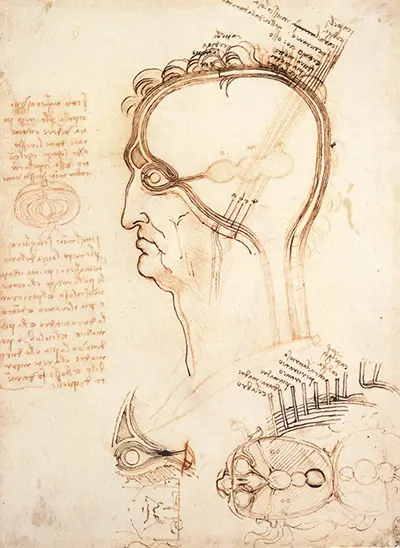Leonardo da Vinci was highly respected for his ability to transform an idea on parchment into a physical reality.
While renowned for his prowess with a paintbrush, he was (and is) just as respected when working with pencil and charcoal.
As opposed to many other painters, we are able to enjoy even more insight into how his mind functioned due to the numerous sketches which illustrated entirely unique concepts.
What makes this piece so striking and perhaps more importantly, what can it tell us about the artist himself?
An Overview of Drawing of an Equestrian Monument
Leonardo da Vinci was a practical man when it came to statues and other physical representations. The monument was first commissioned during the 1480s and it was intended to celebrate the Duke of Milan (Francisco Sforza).
The unit would have been constructed of bronze and at a height of 24 feet, it would have represented the tallest statue of an equestrian theme ever designed.
Thus, there were many physical considerations to take into account such as balance and how its base would support the upper portion. In fact, this sketch is one within an entire series that was envisioned by da Vinci.
Origins of Drawing of an Equestrian Monument
The basic concept of this sketch was actually taken from a previous da Vinci work. The Adoration of the Magi is an earlier piece and two rearing horses can be seen in the background.
Each was drawn in exquisite detail and while the attention of the viewer naturally gravitates towards the Virgin Mary found in the centre, the addition of horses provides a sense of depth and movement; both characteristics of many da Vinci works.
It only makes sense that such poses were chosen when originally proposing ideas for the statue, as such positions exhibit a sense of power and genius.
The irony is that Sforza himself was said to have approved of the piece and it was not until his fall from power in 1499 that the project was fully abandoned.
Innate Action and Power
Leonardo da Vinci was always able to capture a sense of lifelike movement when he desired and this sketch once again highlights such an innate talent.
We see a horse rearing up on its two hind legs while the rough outline of a man on top appears to be holding a sword and beckoning rear troops to follow his lead.
As the male figure is not given any adornments such as a hat or a soldier's uniform, we are led to believe that his exact personality was not yet defined. What is most interesting to note is the figure of another man directly beneath the front legs of the horse.
One arm appears to be blocking its hooves from trampling him. The most common assumption is that the figure was placed beneath the horse for two reasons. First, it was to show the dominance and strength of the rider. The second motivation was more related to engineering, as the figure would have provided the extra support required to stabilise such a massive bronze figure.
While the statue itself was never created, Drawing of an Equestrian Monument once again highlights the genius and imagination of Leonardo da Vinci.



